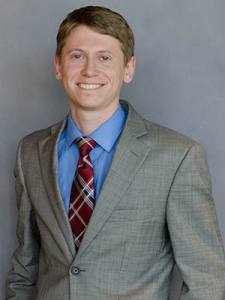The number of agencies in Collin County licensed to provide nonmedical home care grew by 18 in the last three years, bringing the total to 160 in September, according to the Texas Health and Human Services Commission.
While some of these agencies also offer medical services, such as home nursing or hospice care, they all have state approval to meet more routine needs—from help with hygiene and medication reminders to transportation.
These tasks, which typically fall on friends and family members, are essential for those who are no longer able to perform them for themselves because of their age or a disability.
“Most of the hands-on care for older adults who have disabilities is not provided by licensed professionals,” said Doni Green, director of aging programs for North Central Texas Council of Governments. “It’s provided by home health aides and medication aides. There’s a critical shortage with those direct care workers.”
A growing industry
Plano’s population has been aging in place for years, fueling growth in demand for a number of services that cater to the elderly.
The share of Plano residents 65 or older rose by more than 50% from 2010 to 2017, according to the American Community Survey’s five-year estimates. By the end of this period, adults in this age group made up more than 12% of the city’s population.
For some local businesses, the demand has risen even more quickly than the area’s senior population has. Todd Felker, owner of the Plano location of Home Instead, said the growth in his home care business has roughly doubled in the last five years alone.
“The biggest change is the fact that the awareness that a service like this exists over the past five years or so has grown dramatically,” said Felker, whose business has operated for 18 years in Plano. “Families and potential clients are understanding that this is an option, which is great, and they are realizing that this is something they can use to keep [their loved ones] home longer.”
This type of nonmedical care is often one of the earliest opportunities to help people who are already caring for an aging family member, Felker said. He said his clients are often adult children who have moved their parents into the children’s own homes. As the family member gets older, assisted living or more intensive medical care may become necessary instead of the less intensive home care option, he said.“They’re moving their parents home to a much greater extent so that they can help them out—because that caregiving burden does fall on them to a greater extent—and they’re using services like mine to help manage and assist their parents as they live in their own home,” Felker said.
Mary Gilliam, founder of Plano-based Monarch Senior Home Care, said the nonmedical side of a client’s home care is highly individualized. Whereas medical care is often limited to addressing a specific issue, nonmedical home care can be tailored to a client’s needs, she said.
“It can be one hour a week. It can be 24/7,” Gilliam said. “Your care plan can change based on what you need at any given time. It is what you want to make of it.”
But while local demand for these services appears to be growing, Gilliam said she wonders whether the supply of professional caregivers will be able to keep up.
Shortage of care
There is a shortage of professional caregivers in North Texas, said Green, NCTCOG aging programs director. That gap appears to be driven in part by low pay and lack of benefits, she said.
According to the U.S. Bureau of Labor Statistics, home health and personal care aides had an average annual income of $24,060 last year. Their average hourly pay was $11.57, according to the bureau.
Statistics show that there will be a need for nearly 1.9 million more professionals in this field in the U.S. by 2028.
Home health and personal care aides help people with disabilities, chronic illnesses or cognitive impairment with their daily living routines, according to the bureau.
“That’s where I see the real crisis coming—when fast food pays better than those direct care professions,” Green said. “It’s just really, really difficult to find qualified people who will stay in the profession for any amount of time.”
Gilliam said her company finds it a challenge to hire as many workers as she would like who are both qualified and willing to work with people in this stage of life.
She said her pool of applicants is most reliably filled by nursing students looking for experience with working with people in a nonmedical setting as well as by former caregivers of loved ones looking to turn their experience into a career.
“They know from personal experience, which is sometimes the best experience, how to care for a loved one,” Gilliam said. “It’s personal. It’s deep. It’s meaningful.”
The Bureau of Labor Statistics also projects that there will be a steep increase in demand for nursing assistants and orderlies, who help provide basic care for patients in hospitals and residents of long-term care facilities, such as nursing homes. By 2028, there is expected to be demand for nearly 1.6 million additional nursing assistants and orderlies.
“There’s definitely some challenges in terms of professional caregivers, but I think it’s important to recognize that most of the care that’s provided to dependent older adults is [provided] by unpaid family members,” Green said. “So they really are the backbone of our long-term services and support system.”Anna Herod contributed to this report.





